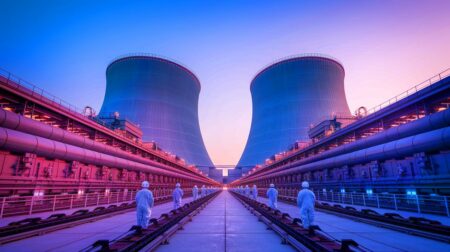The transition towards sustainable energy systems seems inevitable, yet most regions across the globe are still facing their own challenges along the way. A new report by the International Energy Agency provides a glimpse into energy transition in Africa, which is making a growing impact on the global energy agenda.
Africa’s Energy Outlook 2019 comes with an update to the first report on Africa published five years ago. This time it brings both a new level of detail and a new level of ambition, emphasizing the unique context for the sustainable future of the region.
Today, Africa produces only 2% of global energy-related CO2 emissions, while being home to some of the world’s most vulnerable countries when it comes to climate change. It has the “world’s richest solar resources on the planet” while producing only 1% of solar energy globally. The region is also rich in resources such as cobalt and platinum, which are crucial for global energy transitions.
The expected increase in energy demand suggests a potential for a fast rise in emissions, paired with the necessity to rapidly transition towards clean energy sources. Thus, the region is challenged to innovate its path through this situation, with stakes as high as ever.
Within two scenarios suggested by the IEA, one stands out. It looks at Africa’s own vision of the future based on its Agenda 2063 and other key regional policies. And as the report suggests, Africa faces a unique opportunity to do it the right way without repeating many mistakes made by industrially developed nations so it can choose a much less carbon-intensive path.

Under collaborative policies and wise investments, most of those challenges can be solved and we can expect over three-quarters of new capacities to come from clean sources. And if everything goes well, in 20 years we could see an economy four times larger but powered by only 50% more energy.
Meanwhile, many challenges persist, with 600 million people still lacking access to electricity and 900 million lacking access to clean cooking. Lack of clean water and adequate hygiene leads to 500,000 premature deaths every year. Around 80% of sub-Saharan African companies still suffer from electricity disruptions, which often lead to economic losses.
To see how those challenges can be addressed and build upon the present momentum, the report provides an in-depth analysis of factors influencing Africa’s energy development, as well as detailed modeling for 11 sub-Saharan countries. This provides “a much greater level of detail than any other analysis of energy in Africa,” including insights into fossil fuel reserves, energy trade and country-specific challenges. It also considers challenges connected to urbanization, industrialization and other key trends.
To manage the transition effectively, policymakers will have to prioritize public benefits and responsible resource stewardship. It will be crucial to avoid choices that compromise the future for short term economic gains (e.g. hydrocarbons development), investing in transparency and diversification.
Commenting on the report findings, IEA’s executive director Dr. Faith Birol is optimistic about the region’s future and its broader global role. “Africa holds the key for global energy transitions, as it is the continent with the most important ingredients for producing critical technologies,” he says.
The report can stimulate greater and much more informed interest in the region from investors and potential partners across the globe. It remains important to tread a path outside geopolitical and purely economic interests so that Africa’s energy future can become well-aligned with planetary boundaries.
Did you like it? 4.5/5 (27)








